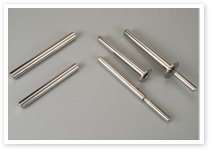
Temperature Characteristics of a Magnet

How to calculate magnetism change according to the temperature change
Calculate the magnetism change that a ferrite magnet of 1000 gauss at a normal temperature (20℃) when the temperatureincreasesto 100℃. The temperature coefficient of the ferrite magnet settles at about -0.18 %/℃.
| Calculation Formula 1000 (G) × (-0.18%) × (100℃-20℃) = -144 (G) |
|---|
| Gauss When Measuring×Material Temperature Coefficient×(Temperature after Change - Temperature When Measuring) = Magnetism Change |
By this calculation, it can be known that there is a magnetism change of -144(G), so the magnetism reduces by -144(G) to 856(G) when the magnet of 100(G) at a temperature of 20℃ increases to 100℃. The magnetism weakens as the temperature rises and strengthens as the temperature drops. But there is something called “low temperature demagnetization”, so attention is necessary depending on the application condition of the magnet.
| Strontium・Ferrite Magnet | -0.18 |
|---|---|
| Samarium・Cobalt Magnet | -0.03 |
| Neodymium・Steel・Boron Magnet | -0.09~-0.12 |
| Samarium・Steel・Nitrogen Magnet | -0.07 |
| Alnico Magnet | -0.02 |













